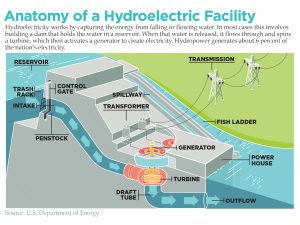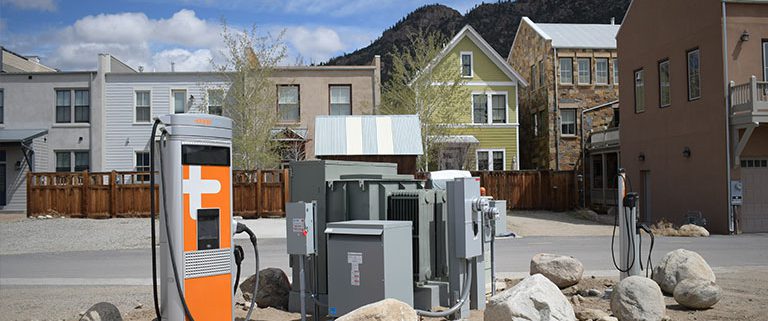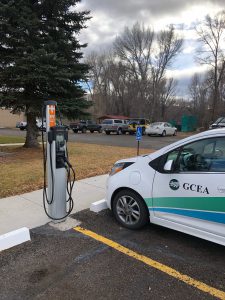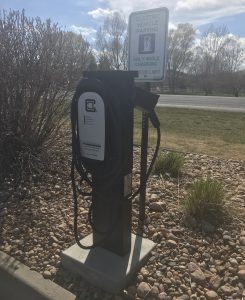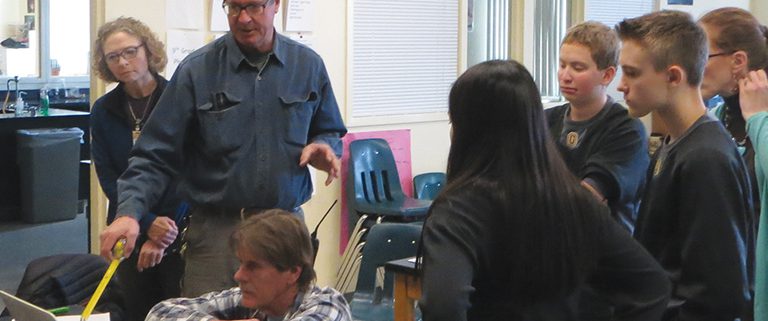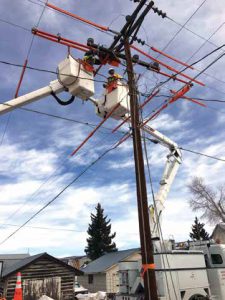Stopping Scams Means Better Service
By Derrill Holly
Our increasingly connected world is giving scammers more opportunities to connect with unsuspecting consumers, and local authorities, utilities and other businesses are working overtime to keep people informed. To help prevent you, your family or your business from being victimized, they suggest “if you see something, say something” is a vigilant adage to abide by.
It’s likely that during the holidays you spent a good amount of time shopping online for family, friends and co-workers, and not tracking where the money was spent. Now, the wrapping paper, bows and holiday lights might be dwindling, but the bills can start to pile up. During this time it can be difficult to keep track of what’s legitimate and what’s not, and scammers can take advantage of consumers during this time of vulnerability, making demands for payment and prying for personal information. This is why it’s especially important to pay attention to the bills you’re responsible for, including your utility bills.
“The Federal Trade Commission has been hearing about scammers impersonating utility companies in an effort to get your money,” said Lisa Lake, a federal consumer education specialist. “Your reports help us fight these scams.”
Electric cooperatives are among the businesses and consumer organizations supporting Utilities United Against Scams (UUAS). The international consortium of electricity, natural gas, water and sewer providers, and trade and industry associations shares information on payment scams, identity theft and sales and service schemes as one means of fighting them.
Impostor scams are the most common type of fraud reported to the Federal Trade Commission, according to UUAS officials. “Impersonators call homes and small businesses demanding payment for supposedly delinquent bills and threatening to terminate service.”
The frequency of the incidents picks up during peak heating and cooling seasons, in part because consumers are most concerned when temperature extremes increase the urgency of maintaining utility service.
Variations on the scam are also becoming more common. Rather than making an initial claim that a consumer owes an outstanding balance, some scammers are now claiming an overpayment is the reason for a telephone call to a consumer. They will make contact in an attempt to get banking information so they can process a refund.
“Never give banking information over the phone unless you place the call to a number you know is legitimate,” Lake wrote in an FTC blog.
There has also been an uptick in door-to-door scams by people claiming to represent utility providers, like your electric co-op. Representatives knock or ring the doorbell offering to replace or repair a meter or other device, or solicit personal information to sign a consumer up for programs that could reduce their energy bills.
They may try to charge you for the phony service, sell you unnecessary products, collect personal information for use in identity theft or simply gain entry to steal valuables, officials said.
High-pressure demands are a common tactic in many of the schemes. Someone urging immediate decisions or actions, like immediate payment, particularly by a specific option like a gift card, wire transfer, cellphone or third-party computer app, should raise serious concerns. Utility-connected scams are common, because utility services are so frequent. Lighting, heating, water and sewage services are all essential to modern living, so any threat of service disconnections can provoke a lot of anxiety.
Your first defense is personal awareness of your account status, including knowing whether balances are up to date. This is becoming more important as scammers use more automatic dialers or “robocalls” to phish for potential marks.
“Even if the caller insists you have a past due bill, that’s a big red flag,” Lake said, offering additional advice. “Contact the utility company directly using the number on your paper bill or on the company’s website. Don’t call any number the caller gave you.”
Derrill Holly writes on consumer and cooperative affairs for the National Rural Electric Cooperative Association.
SMART DEVICES
They’re definitely smart, but not always secure
For many of us, buying and using technology to make our homes smarter and interconnected is as tempting as walking through a candy store as a kid. (Sour Patch Kids and Pixy Stix anyone?)
Although not found in every household, many U.S. homes have one or two components, such as a smart security system complete with cameras, a smart thermostat or a know-it-all “voice assistant” such as Amazon’s Alexa. The rest of our homes range from doing things the old-fashioned way (no smart devices at all) to having a home decked out in every smart technology one could imagine.
According to Statista, a company specializing in market and consumer data, North Americans are forecast to spend $63 billion in the smart home market in 2022. And that’s nothing to sneeze at. (But if we do, millions of Americans may hear Alexa say, “Bless you.”)
Although convenient — who doesn’t want real-time glimpses of who is ringing our doorbell or to hear Google Assistant recite a recipe — smart devices come with their own set of security concerns.
Canada’s CBC News hired hackers (ethically responsible ones, of course) to hack a family’s smart home and they got in, literally. “All it took was a white van, a team of three hackers and a phishing email to remotely unlock … the front door.”
This eye-opening scenario is not intended to scare people; rather, we encourage you to give your smart devices serious thought before diving in. Security measures for smart devices are similar to the steps we should take in our daily life to protect us against seedy scammers and hackers everywhere.
For example, be leery of emails or calls asking for personal information such as login info or passwords. And although everyone loves to use the same passwords like “abc123” for everything, doing so can make your smart devices vulnerable. (Note: It’s not a good idea to use “abc123.” Be creative and make them hard to crack.) And although it seems obvious, never use the factory-set password; change it immediately.
Many tech companies are considering (and others have already switched) to two-step authentication for the smart devices they sell. Although the extra step can feel like a pain, the two-step process is a good thing; it is a valuable step in keeping you and your family safe and your conversations private.
Without the code provided in the second security step, outsiders can’t access your device or account — even if they guessed your SweetHomeAlabama1973 password (or whatever).
For more in-depth technology advice, consult an information technology professional. For more information about electrical safety, visit SafeElectricity.org. And if your password is actually SweetHomeAlabama1973, we apologize; it was used for illustrative purposes only.




